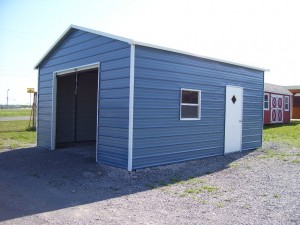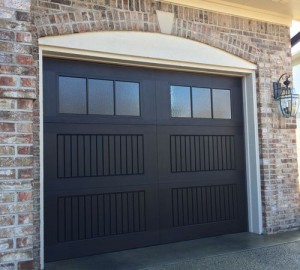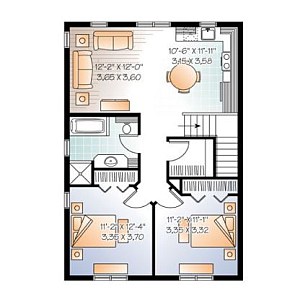
Garage plans that include living space are a great option to add extra rooms to your home. They can be used to add a guest bedroom, an office, or studio, or even a granny-flat or inlaw suite.
This category offers a wide range of designs, from small one- and two-bay apartments to larger two-story apartment buildings. This type building lets you make the most of every square inch in your detached garage and create the perfect space to suit your needs.
In some cases, homeowners might have more garage space than they need to build a house. Garage apartment plans are very popular because they allow you to add a room to your garage without having to take down your existing house.

Be aware of the space in your garage and how your family lives. If you have a single car garage, you'll likely want to go with a studio or 1 bedroom unit. This size is great for a home studio, art studio, or small home gym.
A 2 car garage will allow you to create a larger 2 bedroom suite. These garages typically measure 22-24 feet (6-6 m) in width by 20-30 feet (6-9m) deep. This gives you plenty of space to build a comfortable suite with a living area, bedroom, and kitchen.
An accessory dwelling unit (or ADU) is another option for homeowners looking to increase their living space. These plans are becoming more popular, especially in places like Seattle and Portland where urban density is essential. They can be a cost-effective option for adding an extra bedroom or apartment to a home and are often the only way to build in areas that have zoning restrictions.
ADUs may be a great option to increase the home's worth and extend your living area. You should make sure you are aware of local laws regarding ADUs and how they can be used.

ADUs that are not intended for owner occupancy are sometimes rented out. A garage apartment plan should include an entry on the main floor for landlords. This allows you to access your rental easily.
Alternatively, some ADUs are designed with an exterior doorway and interior stairs to help people with mobility issues gain access to the space. If you're designing an ADU for your elderly parent, you'll need to be sure that the plan you choose has a large entryway so they can easily maneuver their wheelchair or scooter into the space.
Box Living's Waiheke Island-based sleepout design offers a contemporary twist to this classic concept. The contemporary building has a wooden walkway that winds its way down a steep slope towards the sleeping space below. This sleepout is an elegant, functional and beautiful piece of architecture that celebrates the idiom's timeless charm.
FAQ
What should you do with your cabinets?
It depends on whether you're considering selling your home or renting it out. You'll need to remove the cabinets and refinish them if you plan to sell. This gives buyers the impression that they're brand new and helps them envision their kitchens after moving in.
However, if you want to rent your house, you should leave the cabinets alone. Many renters complain about the dishes that are dirty and the greasy fingerprints left by tenants.
You could also paint the cabinets to give them a fresh look. Make sure to use high-quality primers and paints. Low-quality paints can become brittle over time.
What is the difference between renovation and remodel?
Remodeling is the major alteration to a space or a part of a space. A renovation is minor changes to a room, or a portion of a bedroom. Remodeling a bathroom is a major job, but adding a faucet to the sink is a minor one.
Remodeling involves replacing a complete room or a part of a entire room. A renovation is merely changing something in a particular room. A kitchen remodel might include the replacement of countertops, sinks as well as appliances, lighting, and other accessories. You could also update your kitchen by painting the walls, or installing new light fixtures.
Is $30000 enough for a kitchen remodel?
You can expect to pay anywhere from $15000-$35000 for a kitchen overhaul, depending on how much money you have available. If you want a complete kitchen overhaul, expect to pay more than $20,000. You can get a complete kitchen overhaul for as little as $3000 if you just want to replace the countertops or update your appliances.
Full-scale renovations typically cost between $12,000 and $25,000. There are ways you can save money without sacrificing on quality. One example of this is installing a sink, instead of replacing the old one. It costs about $1000. Or you can buy used appliances for half the price of new ones.
Kitchen renovations take more time than other types. So plan accordingly. You don't want to start working in your kitchen only to realize halfway through that you're going to run out of time before completing the job.
Your best bet is to get started early. Start looking at options and collecting quotes from various contractors. You can then narrow your choices by price, availability, and quality.
Once you've identified potential contractors to work with, ask for their estimates and compare the prices. The best bid may not be the most affordable. It's important to find someone with similar work experience who will provide a detailed estimate.
Make sure you include all extras in your final cost calculation. These might include extra labor costs, permit fees, etc. Be realistic about what you can afford and stick to your budget.
Be honest if you are unhappy with any bid. Tell the contractor why you don't like the initial quote and offer another chance. Don't let pride get in the way when you save money.
What are the included features in a full remodel of your kitchen?
A complete kitchen renovation involves more than simply replacing the sink and faucet. You can also get cabinets, countertops or appliances, as well as flooring and plumbing fixtures.
Homeowners can remodel their kitchens completely without needing to do major work. This means there is no need to tear down the kitchen, making the project more manageable for both the homeowner as well as the contractor.
There are many services that can be done to your kitchen, including plumbing, electrical, HVAC, painting, and carpentry. A complete kitchen remodeling project may require multiple contractors depending on the size of the job.
It is best to work with professionals who have experience in kitchen remodeling. There are often many moving parts in a kitchen remodel, so small problems can cause delays. DIY kitchen remodels can be complicated. Make sure you have a plan and a backup plan in case of an emergency.
How much does it cost for a shower to be tiled?
It's worth spending a lot if you plan to do it yourself. A full bathroom remodels an investment. If you think about the long-term advantages of having a gorgeous space for years to follow, it makes good sense to invest quality fixtures.
The right tiles can make all the difference in how your space looks and feels. This quick guide will help with your selection of the best tiles, no matter if you're looking for small or big projects.
First, decide which type of flooring you'd like to install. Ceramics, porcelain, stone, and natural wood are common choices. Select a style, such as classic subway tiles or geometric patterns. Choose a color combination.
For large bathroom remodels, you will likely want the tiles to match the rest of your room. You might choose white subway tiles in the bathroom and kitchen, but use darker colors in other rooms.
Next, decide the scope of the project. Do you think it is time to remodel a small powder-room? Or would you rather add a walk-in closet to your master suite?
After you have determined the scope of work, visit local shops to see samples. This will allow you to get a feel for how the product is assembled.
Shop online for amazing deals on ceramic and porcelain tiles Many sellers offer bulk discounts and free shipping.
In what order should you renovate a house?
The roof. The second is the plumbing. Third, the electrical wiring. Fourth, the walls. Fifth, the floor. Sixth, the windows. Seventh, doors. Eighth, the kitchen. Ninth, the bathrooms. Tenth is the garage.
Finally, after all this work is done, you'll have everything you need to get into the attic.
Hire someone to help you if you don't have the skills necessary to renovate your home. Renovation of your house requires patience, effort, time and patience. It can also be expensive. It will take time and money.
Renovations aren’t always inexpensive, but they can make your life easier and save you money in the long term. Beautiful homes make life more enjoyable.
Statistics
- Attic or basement 10 – 15% (rocketmortgage.com)
- $320,976Additional home value: $152,996Return on investment: 48%Mid-range average cost: $156,741Additional home value: $85,672Return on investment: (rocketmortgage.com)
- Windows 3 – 4% Patio or backyard 2 – 5% (rocketmortgage.com)
- 57%Low-end average cost: $26,214Additional home value: $18,927Return on investment: (rocketmortgage.com)
- According to a survey of renovations in the top 50 U.S. metro cities by Houzz, people spend $15,000 on average per renovation project. (rocketmortgage.com)
External Links
How To
How to remove tile grout from floor tiles
Most people don't know that tile grouting exists. It is used to seal joints between tiles. There are many kinds of grout on the market today. Each type serves a specific purpose. We will demonstrate how to remove grout from tile floors.
-
Before you start this process, make sure that you have all the necessary tools. You will need a grout cutter and grout scraper.
-
Now you need to start cleaning off any dirt or debris stuck under the tile. Use the grout knife to remove the grout. Scrape away any remaining grout. You should not damage any tiles.
-
After everything is cleaned up, use the grout scraper for any remaining grout. If no grout is left over, you can proceed to step 4.
-
After all the cleaning is done, it's time to move on. Make sure to take one of the rags out and soak it in water. Make sure the rag is fully wet. When the rag has become soaked, wring it out, so that excess water stays inside the rag.
-
The wet rag should be placed on the joint between the tile and the wall. Keep the rag in place until the grout starts to separate. Slowly pull your rag towards yourself and continue to pull it back and forth, until all grout is gone.
-
Repeat steps 4 to 5 until grout is gone. Rinse the ragout and repeat the process if necessary.
-
After you have removed all grout, use a damp cloth to wipe the tiles' surface. Let dry thoroughly.